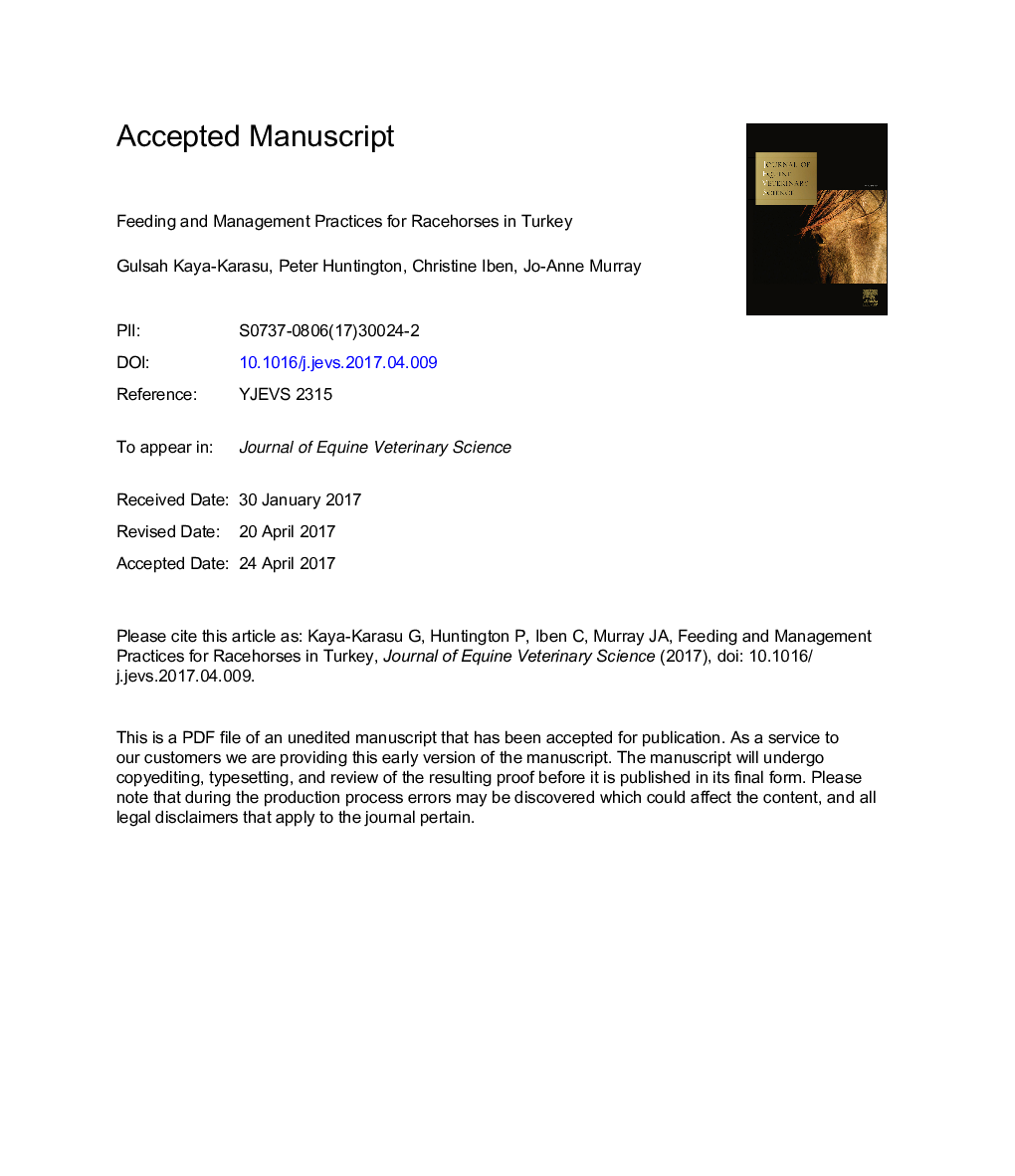| کد مقاله | کد نشریه | سال انتشار | مقاله انگلیسی | نسخه تمام متن |
|---|---|---|---|---|
| 8483275 | 1551539 | 2018 | 10 صفحه PDF | دانلود رایگان |
عنوان انگلیسی مقاله ISI
Feeding and Management Practices for Racehorses in Turkey
ترجمه فارسی عنوان
روشهای تغذیه و مدیریت ریش تراش در ترکیه
دانلود مقاله + سفارش ترجمه
دانلود مقاله ISI انگلیسی
رایگان برای ایرانیان
کلمات کلیدی
موضوعات مرتبط
علوم زیستی و بیوفناوری
علوم کشاورزی و بیولوژیک
علوم دامی و جانورشناسی
چکیده انگلیسی
The aim of this study was to gather information on feeding practices and to identify nutrient imbalances of racehorses in Turkey. A total of 134 racehorses who visited the Turkish Jockey Club Racecourse Equine Hospital in Istanbul were referred for professional nutritional advice in 2013. Each horse was examined, and body weight (BW), body condition score (BCS), exercise level, feeding practices, reasons for the veterinary visit as well as feed and supplement intake were recorded. Intakes of energy, crude nutrients, starch, sugar, and minerals were calculated and compared to the requirements. Descriptive data were calculated using commercial statistical software (IBM SPSS Statistics 24, Chicago, IL). The median age of the population was 3 years. The mean BW of the horses was 423 ± 38.4 kg, and BCS was 4.5/9 ± 0.7. Nearly all (99.2%) horses were fed grass hay, and 61% of the horses received alfalfa as well. The average forage intake was 1.0 ± 0.4% of BW/d. The average intake of concentrate was 1.2 ± 0.4% of BW. Forty-nine percent of the horses were fed supplements, and only 12% received oil. The mean metabolizable energy (ME) intake was 1.0 ± 0.2 MJ ME/kg BW0.75 for thoroughbreds and 0.9 ± 0.1 MJ ME/kg BW0.75 for Arabians. The calculated mean starch intake was 5.0 ± 2.2 g/kg BW, and the sugar intake was 1.2 ± 0.4 g/kg BW. Communication between horse owners/trainers and the equine nutritionists are needed with regard to formulating a proper diet for each horse.
ناشر
Database: Elsevier - ScienceDirect (ساینس دایرکت)
Journal: Journal of Equine Veterinary Science - Volume 61, February 2018, Pages 108-113
Journal: Journal of Equine Veterinary Science - Volume 61, February 2018, Pages 108-113
نویسندگان
Gulsah Kaya-Karasu, Peter Huntington, Christine Iben, Jo-Anne Murray,
